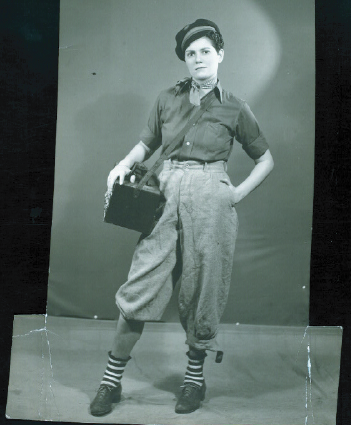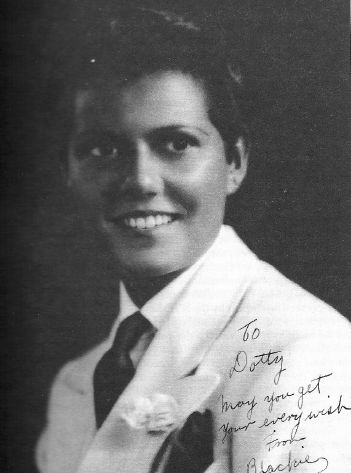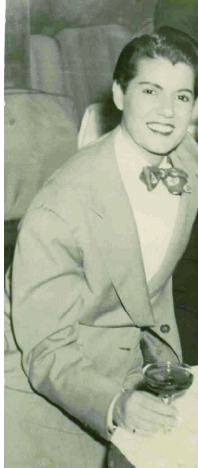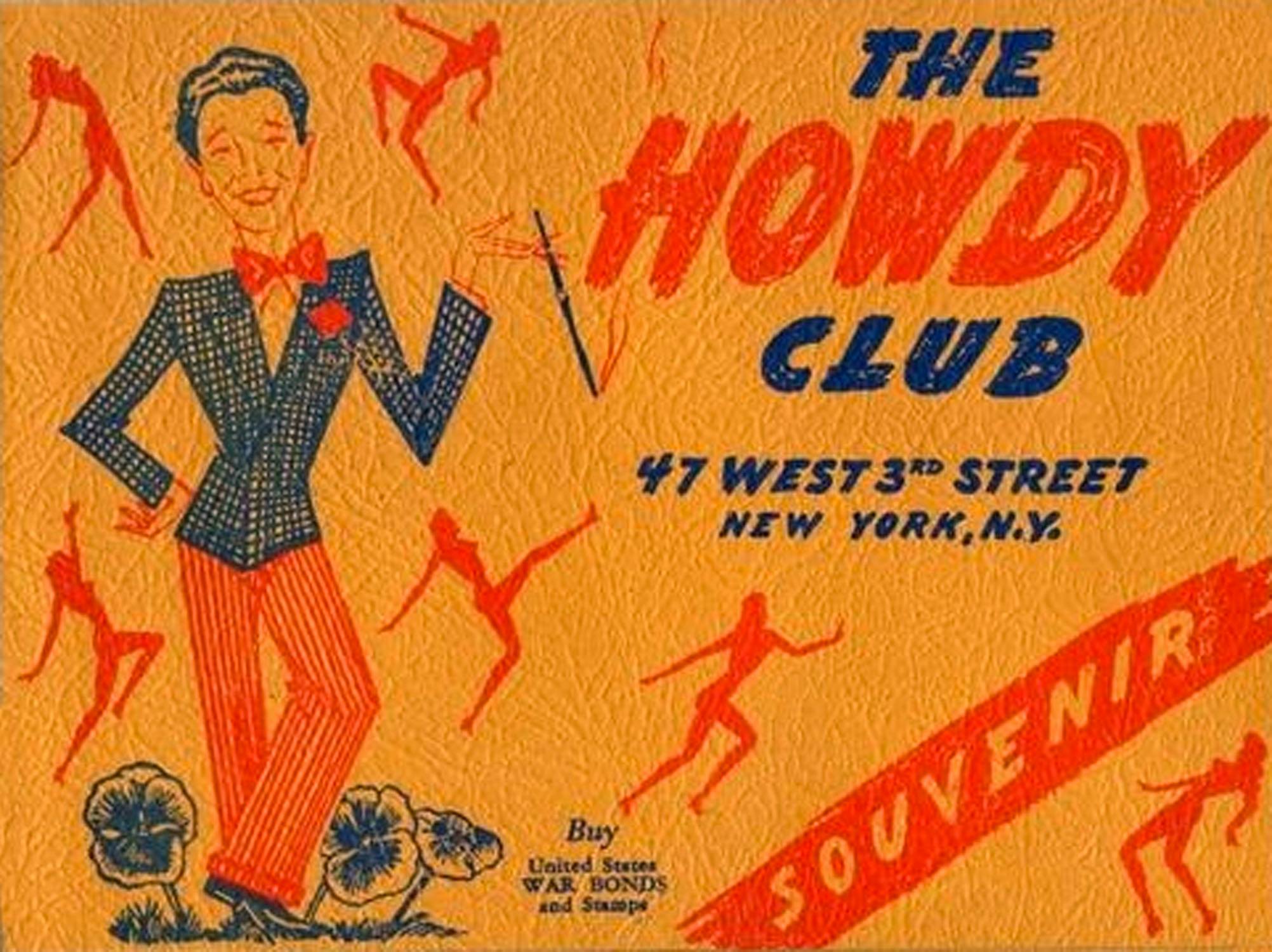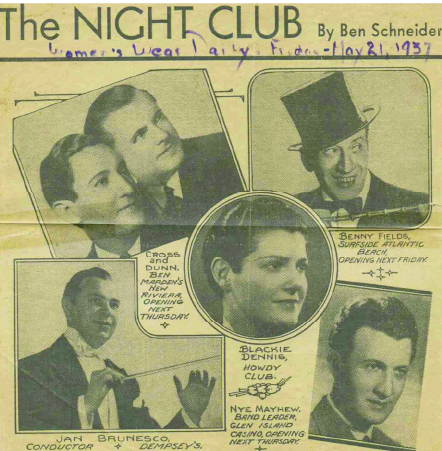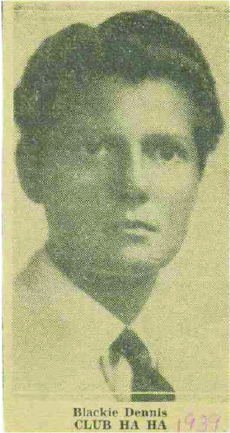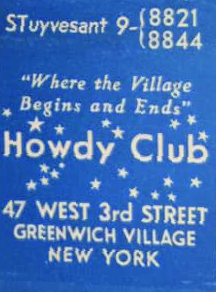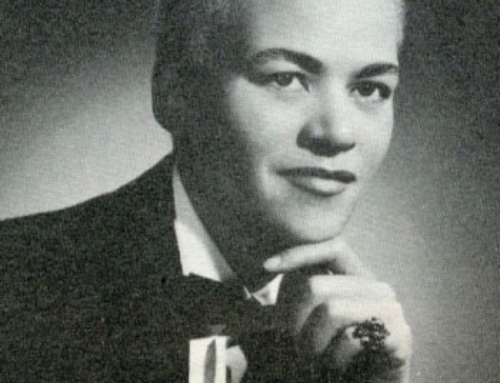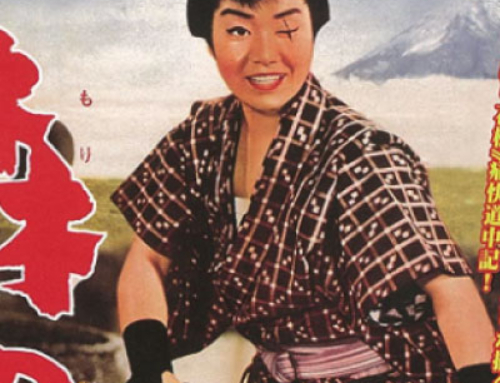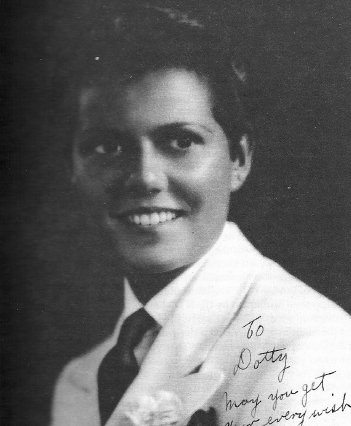
Years active
1935 – mid-1950s
Stage Name(s)
Blackie Dennis
Category
Male Impersonator
Country of Origin
USA
Birth – Death
1911 – 1988
Bio
Blackie Dennis was a male impersonator from the mid-1930’s to the mid-1950’s who performed in the notorious nightclubs of New York City’s beloved bohemian neighborhood, Greenwich Village. She wore tuxedos and sharp suits and sang to audience delight starting at the Howdy Club in 1935. And she found her way to perform with Babe Baker’s Revue at the Ha Ha Club in Hollywood, Florida where she retired.
Blackie Dennis, formerly Michelina Lombino, was one of eight children born in 1911 into an Italian immigrant family in East Harlem, at that time an uptown Little Italy. Generally, she had the support and admiration of her siblings and their offspring for her successful career as an entertainer. While some may have had reservations about her sexuality, they took pride in her striking good looks and golden voice.
According to family gossip, Blackie almost began her entertainment career as an actor in Sidney Kingsley’s popular play Dead End playing one of the “dead end kids”. This venture may have been the inspiration for the photo of her that found a home in the New York Public Library’s Billy Rose Theatre Collection, a likeness the family identifies as “shoeshine boy”. Certainly Blackie must have looked the part of a handsome young man in 1934, when Kingsley’s Broadway show was in pre-production. She auditioned to play one of the boys yet wasn’t cast as the role required nudity which would reveal her breasts and besides she was too old to play the role of a young boy. It was no wonder she found her way to Greenwich Village. Without social media, even without a telephone, an intrepid Blackie, like so many of her contemporaries who were “different,” found the bars and clubs that welcomed both performers and customers of a gay or cross-dressing bent.
Thanks to her new found connections and talent for singing and charming audiences, Blackie joined the cast of a cabaret revue under the direction of Charles “Babe” Baker, who had previously run the Ha Ha Club on 52nd Street in Manhattan. At the Howdy Club on West 3rd Street, in the shadow of the 6th Ave elevated train where it turned East on 3rd , Blackie appeared in the Howdy Revels of 1935 with nine fellow performers in and out of drag. Some of them, like Blackie, would become regulars in Babe Baker’s Revue over the next 10-15 years. During the winter tourist season, they played his new Ha Ha Club in Hollywood, Florida, and performed in cabaret clubs around the country. As a crooner, Blackie liked to open the show with her favorite song, Stardust by Hoagy Carmichael.
The 1950’s brought Babe Baker and his performers to the Moroccan Village Club at 23 West 8th St in NYC almost directly across from the Bon Soir Club, 40 West 8th Street, where performers like Kay Ballard and future super-star Barbra Streisand would get their start. Blackie moved in some pretty lively circles, including stars of stage and screen who came down to the Village clubs including Abbott & Costello, Lana Turner among others.
It was at the Moroccan Village Club in 1950 where Blackie found herself in the midst of an attempted robbery and shooting incident while she was on the mic singing Some Enchanted Evening by Richard Rodgers. The press described her as “a pretty girl singer” despite being dressed in the tailored tuxedo of jacket, bow tie, and trousers that constituted her standard stage attire. And while she is often reviewed as an “impersonator,” and “a very clever little impersonator” at that, she is also identified by the press as “a pretty young woman dressed as a man.”
Whatever the classification, Blackie held her own in the world of Greenwich Village nightlife, where clubs featuring gay and lesbian performers were largely protected by Mafia payoffs. But she was more vulnerable in the world beyond the footlights. In 1953, young businessman Minot F. (Mickey) Jelke was accused of profiting off the prostitution business, and Blackie had been named by the prosecution in the trial. During the interrogation of chief witness, prostitute call girl Pat Ward, the prosecutor asked “Do you know a person named Blackie Dennis? […] Is she a lesbian?” Pat Ward, whose life was in shambles, answered that Blackie was an entertainer, and that she knew no more. To give some idea of the notoriety of the trial and the gravity of the charges, we should note that renowned actress and TV personality Martha Raye had welcomed a desperate and destitute Pat Ward into her home. But Ward’s stay ended abruptly when she tried to commit suicide and was rushed to the local hospital. As tensions mounted, law and order’s campaign against the mob and its cohorts heated up, which made Florida look more appealing to Blackie and her friends.
As the decade faded into history, Blackie settled permanently in Florida with her life partner heiress Catherine “Rusty” Amm. They had met years before at the Howdy Club and moved in together, first on Perry Street in the Village, then on Fieldston Road in the Bronx. The latter move was possibly to distance Blackie from Dorian Dennis (aka Rene Eisenstadt), another long-time beloved who had achieved local and national acclaim as a big-time stripper, and had lived for years on West 16th St. By 1959, Blackie, Rusty, and Dorian were living in adjoining houses in Hollywood, Florida, not far from Babe Baker’s Ha Ha Club. On the side, Blackie and Dorian worked for Zorita (Kathryn Boyd), one of America’s most notorious strippers, whose act included large snakes at her Show Bar Club on Collins Ave in Miami Beach. Both Blackie and Dorian make cameo appearances in the 1969 film Judy’s Little No-No, shot in Zorita’s club.
Today, Blackie, Rusty, and Dorian rest peacefully together in the Hollywood Memorial Gardens cemetery in Hollywood, Florida.
(Submitted by Lisa E. Davis, New York, NY)

